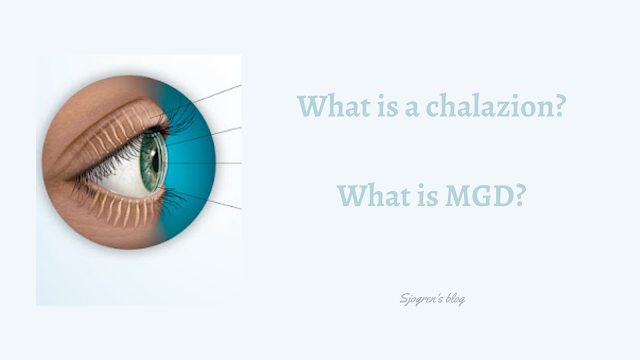What is a chalazion?
A chalazion starts as a firm lump under the skin of the upper or lower eyelid. They are usually caused by clogged oil glands. Frequent use of hot compresses, lid wipes, and topical steroid ointments, can help them disappear.
- Unlike styes, chalazia often don't hurt.
- Chalazia grow more slowly than styes. If a chalazion gets large enough, it may affect your vision.
- The inflammation and swelling may spread to the area surrounding the eye.
- They can sometimes drain and disappear on their own, in a few months, without treatment.
- Apply warm, wet compresses for 5 to 10 minutes, 3 to 6 times a day. This usually helps the area heal faster. It may also help open a blocked pore so that it can drain and start to heal.
- Use an over-the-counter treatment. Try an ointment (such as Stye), solution (such as Bausch and Lomb Eye Wash), or medicated pads (such as Ocusoft Lid Scrub).
- Let the chalazion open on its own. Don't squeeze or open it.
- Don't wear eye makeup or contact lenses until the area has healed.
Chalazion Causes
A chalazion is caused by a blockage in one of the oil glands in the eyelid. They are NOT caused by an infection. These glands are called Meibomian glands. They help provide moisture to the eye. They have tiny openings to release oils onto the surface of the cornea.
Please note that these glands are above and below the eyes and that a chalazia can be anywhere in that area.
Blockage in the eyelid Meibomian glands, causes tears to evaporate faster than normal. This lack of tear oil is often referred to as Meibomian Gland Dysfunction (MGD) or Meibomianitis. It is often associated with blepharitis, which can cause a buildup of a dandruff-like substance at the base of the eyelashes.
Below is an in-depth but easy-to-understand video from the UC Berkeley School of Optometry & Vision Science about MGD and what to do if you have it. Please note that the pinching technique is NOT squeezing a chalazia as this is not recommended.
In addition to the above, some people benefit from supplementing their diets with omega-3 fats. Omega- 3 fatty acids improve the quality and consistency of the oil produced by the Meibomian glands.
Flaxseed oil and fish oil are excellent sources of omega- 3 fatty acids.




Comments
Post a Comment